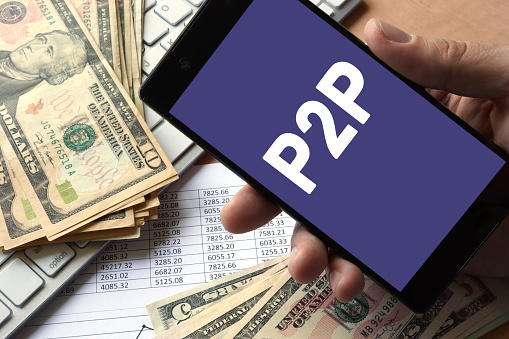How to Achieve Your Fundraising Goals: The Ultimate Guide for 2022

Raising funds for your cause can be a daunting task. While some fundraising campaigns are very successful, others fail to reach their donation goal and fail to achieve success. In this blog post, we will discuss the ultimate guide on how you can achieve your fundraising goal!
Campaigns

How does a fundraising campaign succeed? There is no one answer or formula that guarantees success for every fundraising appeal, but there are some steps you should take in order to boost your chances of reaching your donation goal.
In this section, we’ll look at what a fundraising campaign is, and how to lay the groundwork for a successful fundraising campaign strategy.
What is a fundraising campaign?

There are two terms here that we need to define:
“Fundraising” is the act of soliciting donations to support a cause or nonprofit organization.
We also need to define the word “campaign”.
A campaign is an organized effort to achieve an objective.
Let’s look at each of those words separately because they’re very important.
Nonprofit fundraising campaigns need to be well organized if they are going to be successful. If you don’t have a solid plan, then you will not succeed. So planning is crucial, and so too is how you execute on that plan.
Fundraising campaigns require effort. This might sound obvious, but the money isn’t going to raise themselves. Fundraising campaigns require hard work in order to be successful. That doesn’t mean they are necessarily arduous, but fundraising is something you do need to work at and put some effort into.
And all of this is done in order to achieve an objective.
You have to define success. How will you know if you have reached your goal? Well, it helps if you have one and you’ve written it down.
Now we know what a fundraising campaign is, let’s look at some of the different types of campaigns.
Different types of campaigns

There are many different types of fundraising campaigns that nonprofits use to raise money. They’re typically either defined by their fundraising goal (the purpose for which the funds are being raised) or by the method employed in raising money.
End-of-year campaigns typically use the natural deadline of either the end of the fiscal or calendar year. In many countries, these dates are the same, but in countries like Australia, your fiscal year and calendar year may not line up. The main thing to keep in mind with end-of-year campaigns is that they have a very clear deadline. The money must be raised by a certain time otherwise the goal will not be met in time.
Capital campaigns seek to raise funds that will be used, typically to buy or build infrastructure that will help the organization to achieve its mission. Like end-of-year campaigns, a capital campaign has a clear purpose and very finite goal, but the donation period can last anywhere from one to several years as it’s not tied to any specific date.
Crisis campaigns are fundraising campaigns that respond to an event that is usually unforeseen such as an earthquake, tsunami or other natural disasters. Of course, not all crises are natural disasters. A political or caused base campaign might launch an appeal in response to a change in circumstances in the political environment. The main thing to note is that crisis campaigns have a very specific timeframe in which they must be completed.
Recurring donation campaigns are, as the name suggests, these campaigns that ask people to make a donation on a monthly or other recurring basis. This type of campaign is popular with nonprofits as it provides them with a steady stream of income and allows them to budget better for their programs and operations. Recurring giving is so important for organizations because recurring donors, people who give on a recurring basis or who give multiple gifts over consecutive years will become your most valuable donors. They will be the ones who you can rely on either in a crisis or to support large one-off campaigns like a capital-raising effort.
Special event campaigns are campaigns that coincide with a specific event such as a gala, auction or walkathon. These events can be very successful in terms of generating donations, but they require a lot of advance planning and coordination.
Increasingly with the rise of peer-to-peer and other online platforms, there is a trend towards personal fundraising campaigns. These are campaigns where people, often friends and family of someone with a terminal illness or who have been diagnosed with cancer donate for the benefit of a single individual or family.
A political campaign is a fundraising campaign designed to raise money for a political party or cause. These campaigns are typically focused on the election of an individual to office or their re-election, but they can also be used to raise funds in order to promote specific policies and ideas as well as convince voters that supporting these is important.
Online fundraising campaigns are campaigns that are run exclusively online. This type of campaign is becoming increasingly popular as it’s a great way to reach a large number of potential donors quickly and easily.
Peer to peer fundraising campaigns are campaigns that are run by an individual or group of individuals for the benefit of someone else, typically a family member or friend who falls ill. This type of campaign is becoming increasingly popular as it provides donors with a simple way to give money using their Internet-connected devices and offers recipients another avenue through which they can raise funds quickly.
Matched gift campaigns are campaigns that are matched by another donation. For example, a donor may agree to match every donation made up to $500. This type of campaign is very popular with donors as it offers them the opportunity for their donation to go further than it would otherwise. Matching campaigns are a great way to acquire new donors for your nonprofit. Making sure there is a set time limit on the matching period helps create a sense of urgency. The matching period becomes a limited-time opportunity for new donors to give a small gift that has an even bigger impact.
You campaign goal

Your fundraising campaign needs to have a clearly defined goal in order to succeed. As yourself, how are you going to define success? How will you know if you’ve succeeded in meeting your fundraising goals?
A successful fundraising goal should answer the following questions:
- how much money needs to be raised?
- how will the money be spent?
- what will the donor achieve through their gift?
- what is the deadline for reaching this goal?
How to develop your fundraising strategy

Now that you’ve outlined your vision of success it’s time to write your fundraising strategy. Your strategy needs to cover some important questions and topics:
- Who are your prospective donors?
- Why should they give to support your fundraising campaign?
- How are you going to be soliciting donations from them?
- What communications tools and platforms do you need in order to ask for donations and collect donations?
The best online fundraising ideas are the ones that form part of a coherent strategy that is designed specifically to achieve your goals. So having a clear plan for your fundraising appeal is crucial.
Using the right tools

After you’ve written down your fundraising strategy it’s time to look at your existing infrastructure and make sure you’ve got everything you need in order to solicit donations receive donations.
If you’re running an online fundraising campaign you’re going to need some sort of campaign page where you can place your donation form so that donors can enter their credit card details securely and give their gifts.
If you don’t already have an online donation form provider then I highly recommend Donorbox. It’s a simple tool that allows you to get up and running in less than 15 minutes.
Just imagine, in 15 minutes you could be ready to launch your first online campaign! If you don’t already have an online donation form, then be sure to check out Donorbox.
Audience

Getting Traffic To Your Donation Page
Now that you’ve installed your online donation form you’re ready to motivate your donors to head to your donation page and give online.
There are many different ways to encourage people to visit your nonprofit’s donation page. This section is going to look at some of the most important traffic sources you can use for people to visit your site.

Email is one of the most effective communications channels for online fundraising. It’s important to make sure you’re sending newsletters and emails that give people a reason to visit your donation page.
You may want to send out an email asking for donations after someone signs up for one of your other communications channels like Facebook or Twitter.
When sending an email appeal there are a few things you should keep in mind.
#1 Only ever give people one thing to do. Make sure your email has a single, clear Call To Action. Make sure your email only links to one place, your campaign page. If you include links to other websites (even your blog), you’ll be giving people a reason not to give. If you’re trying to fundraise online and you want to see more donations, then you only ever want to give people one thing to do at a time.
#2 Send more than one email. Aim to send an email once every one-two weeks of your fundraising campaign. At the beginning of the campaign, focus more on the emotional aspects of your case for support. Towards the end, you’ll want to break down any objections or concerns people might have about giving to your appeal.
#3 Build urgency. As you approach the end of your appeal, you should focus more on the looming deadline and the consequences of missing that goal. You can increase the frequency of emails here to daily if necessary. During busy times of the year like Christmas, when people’s inboxes are full of marketing emails, you may also want to try emailing in the morning and the afternoon.
Direct Mail

Rumours of the death of direct mail are greatly exaggerated. Direct mail is still an incredibly powerful tool if you want to raise donations. Using mail also means that you’re not relying entirely on online campaigns for your fundraising revenue. Diversifying your fundraising efforts means you aren’t relying on any single communication for generating funds. Here are some tips for running an effective direct mail campaign.
#1 Use a personal touch when sending direct mail. Make sure you’re personalising the letter with your donor’s name. And if funds allow, personalise your reply form so your donor doesn’t have to write out their name and address. That way, it’s already taken care of for them and you should see an increase in your response rate because you’ve made it easier for them to give.
#2 Track your direct mail revenue separately. Unlike email, there is a higher cost to sending direct mail. So you’ll want to know for sure how much revenue your mail campaign is generating. As more and more donors become comfortable with online giving, we’re seeing direct mail is working to prompt people to give online. You’ll want to track this revenue separately so you know which communication to credit with which donations. Use a unique URL on your reply form so you can track how many donations your direct mail is responsible for. You can also use a QR code on your donation slip to make it even easier for donors to give.
How To Get More Leads

Whether you’re using email or direct mail to get people to your donation page, you’re going to need a list of supporters you can either email or to whom you can send letters. Some nonprofits already have a constituent database they can communicate with. Churches and other nonprofit organizations that serve a distinct group of people typically have a database with contact details for their nonprofit’s members.
However, if you’re starting a new nonprofit from scratch, or you don’t already have a database of potential donors, then you’re going to need to build one from scratch. We call these potential donors ‘leads’ or ‘prospects’.
There are so many different ways to go about getting more leads but probably the best resource you need is the 5 Day Lead Challenge presented by ClickFunnels founder Russell Brunson and author of the book Traffic Secrets.
This is a FREE, 5 Day Challenge designed to get you set up with everything you need to get your first email signups.
It’s mostly targeted towards business owners and marketers, but the principles taught in this course apply just as well for nonprofits. And best of all, it is completely free to enter the challenge.
So why not kickstart your nonprofit email list by taking the 5 Day Lead Challenge today.
SMS

If your nonprofit has a list of donors’ and supporters’ cell phones, then you should consider using SMS to prompt people to give. SMS still has some of the highest open rates of any communication channel.
SMS is still a very personal and private communication channel, so you’ll want to use SMS sparingly but here are some examples of how you can use SMS effectively in your appeal.
#1 SMS your major donors and give them a heads up that you’re going to send them an important letter or email. It’s a nice personal touch and it means your major donors, who are some of your most engaged supporters, will know to be on the lookout for your letter.
#2 Use SMS to build a sense of urgency as you get closer to the deadline. Think about when and how you use SMS in your life. Often times we use SMS for time-sensitive communication. For instance, if you’ve sent a colleague an important email and you need them to check their inbox right away. Try to use SMS the same way. As you approach the deadline for your campaign, use SMS to send people a link to your website’s campaign page. If you’re using mobile responsive donation pages (like the ones you can create in Donorbox) then
Organic Social Media Channels

The best campaigns use multiple communications channels to reach donors and drive them to your donation page. One way you can do this is by using social media to keep your online fundraising campaign top of mind for both existing donors and potential supporters.
Social media channels like Facebook, Instagram and YouTube are great places for fundraisers to raise awareness about their organization’s mission and highlight the case for support.
The more communications channels you employ in your online fundraising appeal the more funds you are likely to raise.
If you’ve got a powerful story to tell, then social media can be a great place to share it.
Here are some tips for making the most of your social media accounts to help you with your fundraising.
#1 Use social media to stay top of mind. Rather than trying to drive donations through online giving, think of social media as an opportunity to keep your fundraising appeal top-of-mind for your existing supporters. That way, you’re constantly building relationships and long term support with your existing supporters so they’ll be more ready to donate when they receive your next email or letter. You don’t always have to use a call to action and encourage people to give. Sometimes it’s enough just to share a powerful story about your nonprofit.
#2 Share links, but not too often. Platforms like Facebook don’t like it when you take people away from their website. This is another reason why you should include a donation link on every piece of content you post, not just your fundraising page. But that doesn’t mean you should share the link to your donation page in every post. Try to mix up the types of posts you share and make sure at least some of them are photos or videos that don’t have a direct donation call-to-action. If you share donation links too often, it can feel like spam to your followers and Facebook may start penalizing your nonprofit because it doesn’t want you taking people away from its platform.
#3 Don’t rely on social media for your traffic. Too many nonprofit organizations fall into the trap of thinking that social media is going to provide all the traffic to their website or donation page. But as we’ve seen above, you should be using other tools like email and direct mail to drive gifts through your website.
#4 Encourage supporters to share your fundraising appeal on social media. A great next step when people donate online is to encourage them to share your donation campaign on social media. If you have a strong call-to-action in the donation pages that people see when they contribute, then this should be easy for most donors. This can help boost your fundraising efforts and bring other donors into your fundraising appeal than you otherwise would have seen.
#5 Peer to peer fundraisers can use social media to acquire new supporters for your nonprofit. If you’re running a peer-to-peer fundraising campaign, then social media can be a great way to acquire new donors for your nonprofit. Your fundraisers can share your donation page on their personal Facebook profile or Twitter account and ask their friends and followers to donate.
#6 Use social media for your personal fundraising page. Not all fundraisers are raising funds for nonprofit organizations. There are plenty of people who set up personal fundraising pages to help raise funds to pay for unexpected medical expenses and provide for other needs. If you aren’t running a nonprofit and you’re just trying to get friends and family to give to your online campaign for your personal fundraising page then social media is a great place to start.
Paid Social Media Advertising

Another way to drive traffic to your online donation page is through paid digital advertising. However, this can be an expensive way to boost your online fundraising and should only be attempted if you either know what you’re doing or your nonprofit has enough funds to experiment with new approaches.
There are many different platforms for paid social media advertising, but the most common ones are Facebook and Instagram. In order to run a successful ad campaign on either of these platforms, you need to know your target audience and what you’re trying to achieve with your donation campaign.
Another approach would be to hire a consultant who specialises in nonprofit fundraising through social media advertising. That way you can hire a professional to get you your desired outcome without having to muddle your way through the technicalities of digital online fundraising ads.
Response Rate

What is your response rate?
The next big concept to understand is your response rate. Your response rate is simply the percentage of people who see your donation campaign or fundraising appeal and then donate.
There are a few different ways to calculate your response rate, but the most common way is to divide the number of donations by the number of impressions (the number of times your donation campaign was seen).
For example, if you had 100 donors and 2,000 impressions then your response rate would be five per cent.
The first step to increasing your conversion rate is to measure your current rate and use that as a baseline.
Different donor segments have different response rates

It is important to understand that different types of donors will have different response rates. For example, non-donors (people who may generally be supportive of your nonprofit but who have not yet given their first gift) generally have a much lower response rate than donors who give recurring donations. Your major gifts segment will respond very differently from lapsed donors (donors whose last donation was more than 12 months ago). The more engaged someone is with your cause, the more likely it is they will respond to your online fundraising appeal.
How to increase your response rate

Here are some tips to help you increase your response rate.
#1 Simplify your donation form. Your donation form should be as simple as possible. You need to make it super easy for donors to give online. If you want your online fundraising to raise more money, then you need to use an online donation form that is designed to remove any distractions that would discourage people from giving. This is another reason why I highly recommend using Donorbox to create your donation forms. Its a really easy tool to use, it creates great-looking donation forms and they work on mobile devices too.
#2 Mail fewer prospects. Non-donors have some of the lowest response rates. While this isn’t an issue for a relatively inexpensive communication channel like email, you want to make sure that non-donors aren’t taking up too much of your direct mail budget.
#3 Use donor-centric language. Make your donor the hero of your appeal copy. Focus on your donor and what they can achieve through their gift. Donors love to know that their gift will make a difference. So make sure your language focuses on your donors and not on your organization.
#4 Focus on outcomes. Your donors don’t care about your branding, your CEO or your process. They care about the work you do and what you are achieving. Your emails and landing page copy should focus on what your donor will achieve through their gift, whatever their donation amount.
#5 Use a deadline. It is important your appeal creates a sense of urgency. Use a deadline like 31 December or some other natural deadline to help donors understand the need for them to give today.
#6 Raise the stakes. What will happen if you don’t meet your goals? Let your donors know! Tell them the consequences of missing your goals. Too many nonprofit fundraising appeals don’t do enough to help donors see the cost of not giving.
#7 Use video to tell a story. Embed your campaign video on your donation page. It’s a great way to boost your online fundraising by showing donors how their gift is going to be used.
Average Donation

Increasing your average donation amount will help your online campaign to raise more money. But how can you increase your average gift and boost your online fundraising?
Here are some ways you can encourage people to give more on your donation page without looking like you just want to take their money.
#1 Increase your suggested donation amounts. Many online fundraising forms include a selection of buttons that give donors the option to select from a list of suggested giving amounts. By increasing these suggested amounts, you’ll automatically encourage people to give more.
How much should you increase the suggested amounts by? Well, that depends on your average gift amount and how likely you are to get a larger donation from those who donate less. For example, if your average gift is $25, then increasing the suggested amounts to $50 may be too high. Experiment with the amounts and see what works best for your organization.
#2 Give donors the option to make regular donations. Recurring giving is a great way to increase the value of your average donation. If your online fundraising platform allows you to accept recurring donations, then consider leaving this option turned on for each of your online fundraising appeals. I see so many other organizations that have the recurring donations feature turned off, and they’re leaving money on the table. Don’t limit your donor’s ability to give generously.
#3 Link donation amounts to outcomes. One idea I’ve seen is the way many fundraisers are able to link giving amounts on their donation forms to outcomes.
#4 Give donors the option to cover credit card processing fees. Payment processing companies need to earn a living. But credit card fees can eat into your organization’s revenue. If you’re using Donorbox, you can simply tick the box to give donors the option to give a little extra to help cover this cost.
How To Ask For Donations
Highlight The Problem
What problem does your nonprofit organization solve?

All fundraising is problem-solving. Whether you’re providing education, eliminating world hunger or running a political campaign, your nonprofit exists to solve a problem. Your appeal copy (the words you use in your fundraising) needs to highlight this problem. Show your donor how their gift will help to solve the problem.
Build your case for support

Ask yourself ‘why should someone care about my cause?’. ‘Why would someone donate?’ Think about your appeal from the donor’s perspective. What’s in it for them?
Many people are motivated by the opportunity to make a difference. Others may be more interested in personal benefits, such as feeling good about themselves, getting a tax deduction or helping others. Figure out what matters most to your donors and focus on those points in your fundraising appeals.
As you’re building your case for support, make a list of all the outcomes your donors can help achieve by giving.
One of the best online fundraising ideas is to make your fundraising appeals personal. Tell a story about someone who was helped by your organization. Share what happened when they received support from you.
People are much more likely to give when they feel like they’re part of something bigger.
And make sure you let your donors know how their money will be spent. It’s really important that they understand precisely how their donation will be used.
Your Donors

Make your donor the hero of the story
When writing fundraising appeal copy, it’s important to use donor-centric language. This means focusing on your donor and what they can achieve through their gift. Donors love to know that their gift will make a difference, so make sure your language focuses on your donors and not on your organization. For example , say “you can make a difference” instead of “we need your help.”
Thank and reaffirm

After your donor has given their gift it is important to reaffirm your appreciation. Thank them for their gift and let them know how it will be used. You can also remind them of the impact their donation will have. This is a great way to show donors that you appreciate their support and that their donations are making a difference. By doing this, you’ll be affirming their decision to give and reassuring them that their gift was the right decision.
Deliver a progress report

And don’t forget to give your donors regular updates about the work they have contributed to. This is a great online fundraising idea because you can keep them engaged with your organization and show that their support has made an impact. You might even give donors the option to sign up for email updates about current projects they have helped support, so you can share project details and progress reports as new information becomes available. Make sure your fundraising calendar has regular progress reports scheduled for your online fundraising campaigns.
Conclusion
online fundraising is a great way to raise funds for your nonprofit organization. There are many different online fundraising ideas that you can use to increase the amount of money you raise. By using these tips, you’ll be able to create an online donation campaign that will help you reach your fundraising goal.





